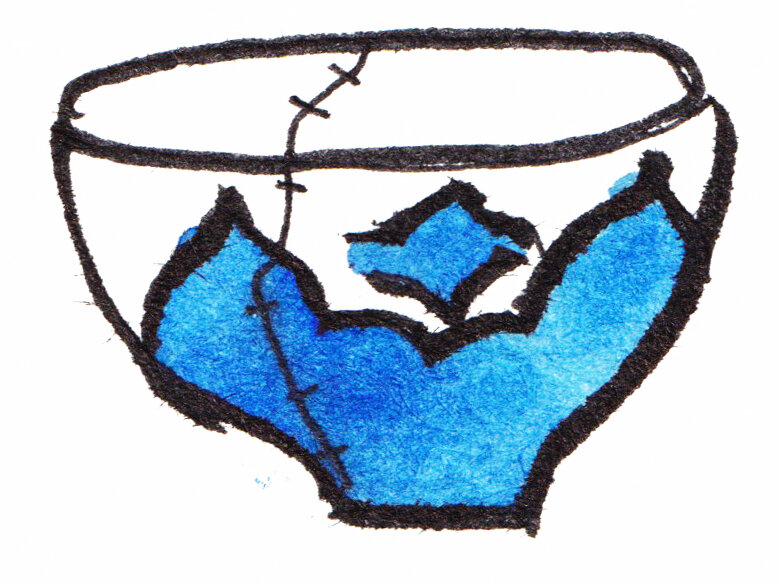Curiosity Index No. 5 MENDING or THE ART OF SHINING WITH NOTHING
Dear Friends,
February flew by, settling my mother in my building. Like many buildings in Paris, ours has a little back courtyard with 2 small ‘atelier d’artistes’. One of them belonged to an Argentinian artist Horacio Garcia-Rossi, a contemporary of Victor Vasarely whom you may have heard of. Horacio passed away several years ago and his atelier was since kept by his wife and daughter. A few months ago, we learned that it was vacant (though still filled with his paintings) and asked his daughter if my mother could stay there. There she is now, in a little house below us, and I get to listen to even more stories stopping by daily for coffee or dinner. Just as in the last months of the curiosity index, one of her stories inspired this theme.
Maybe I have mentioned that in 1943 there was an arbitrary tax on non-Muslim minorities in Turkey.
Those who could not pay their “debts” were taken to Eastern Turkey to build roads and many died on the job. My grandfather was lucky enough I guess to be able to pay by renouncing to his metal welding shop (as my mother says: he took his jacket and left the shop), everything in their home was taken except 4 beds, 4 plates, 4 sets of silverware etc.. (since they were 4). After that, their life was miserable for many years, hence my mother embroidering during recess in middle school for dowries in order to make a few cents while my grandfather became an employee in metalwork for minimum wage the rest of his life.
So it’s February, my mother is 13 years old, and there is a school carnival. She decides to dress as a clown. My grandmother suggests she wear my grandfather’s daily coat, a coat that has been mended and patched for years, since they have no money to buy a new one. She paints her face as a clown, puts on her father’s coat and an old pair of shoes, goes to school and wins best prize! Everybody is amazed at the mending work, the details of the patches, the harmony of colors, believing that it was made precisely for the occasion. You can imagine the laughter when she came home.
This story led me to explore a little part of the world of mending and the art of shining with nothing. Here I am sharing with you what I found and hope you will enjoy it .
We’ll start with a humorous video from the Imperial War Museum How to make-do-and-mend showing how creative one can be during difficult times.
When I think about mending, what comes to my mind is the japanese Boro, meaning “tattered clothing”. Boro is a type of textile made of fabric that has been patched many times. It includes futonji
(Futon covers) noragi (workwear) and other household textiles. It exemplifies the spirit of yo no bi (beauty and practicality). A wonderful book on japanese textiles is Textiles of Japan, The Thomas Murray Collection, if you ever needed one..
I think the artist whose work reflects mending best is Louise Bourgeois. For Louise, the act of
sewing was a process of emotional repair with the potential of healing wounds. In her last exhibition Moi, Eugenie Grandet at the Maison de Balzac, she used textile pieces (handkerchiefs, hand towels brought to the US in 1938 from her childhood in France) to make 16 panels. She recognized herself in Balzac’s Eugenie Grandet, having suffered from a cruel and humiliating father.
Mending is a word that can cover so many fields outside of textiles.
Here is a clip from Zhang Yimou’s beautiful movie The Road Home depicting the mending of an earthenware bowl, arranged by a mother attempting to mend her daughter’s broken heart. All over the world, china was a prized commodity and households could not afford to throw broken pieces. Before the invention of epoxy resins all adhesives derived from natural materials (such as rabbit skin glue..) so they were soluble in water. This method of repair was the only one that would withstand warm ovens and washing. Although it may be less glamorous than Kensugi, it was a method used in many countries and almost just as beautiful in its simplicity.
The most amazing document I found is a Manual of Mending and Repairing with Diagrams from 1896
It’s a gold mine with detailed ingredient recipes on how to mend anything from leather to coral to glass.
Here is a little help (for once) from humans to nature. On our last visit to Kanazawa (Japan) we went to the Kenruken Gardens. These conic structures are called Yukizuri, a traditional technique for protecting the branches of the pine trees in the garden from heavy snow; trees are given support by bamboo poles and rope. A memorable image.
Thank you again once again for taking the time, please don’t hesitate to comment, share and open up your world to us.
Lots of Love,
Talin
PS. A little gem for you: a jazzy/slam song by the artist Louis Bourgeois where she plays with the masculine and feminine of french words showing how the feminine version of all activities is diminished by the suffix "otte" reducing to something negligeable.







